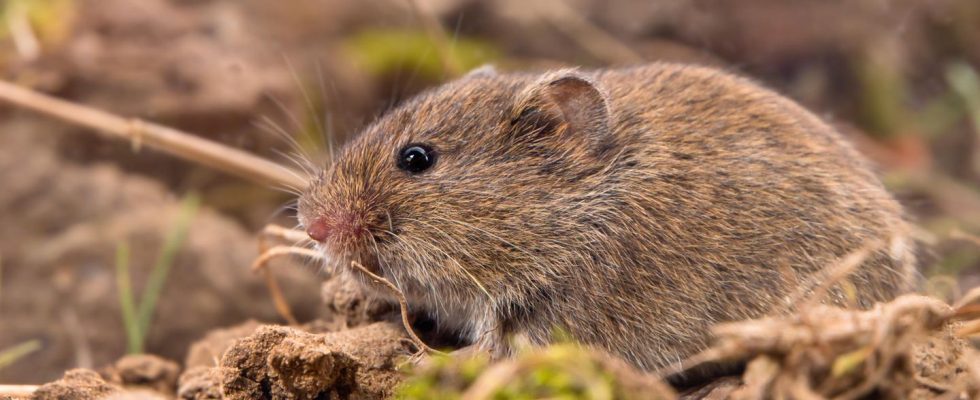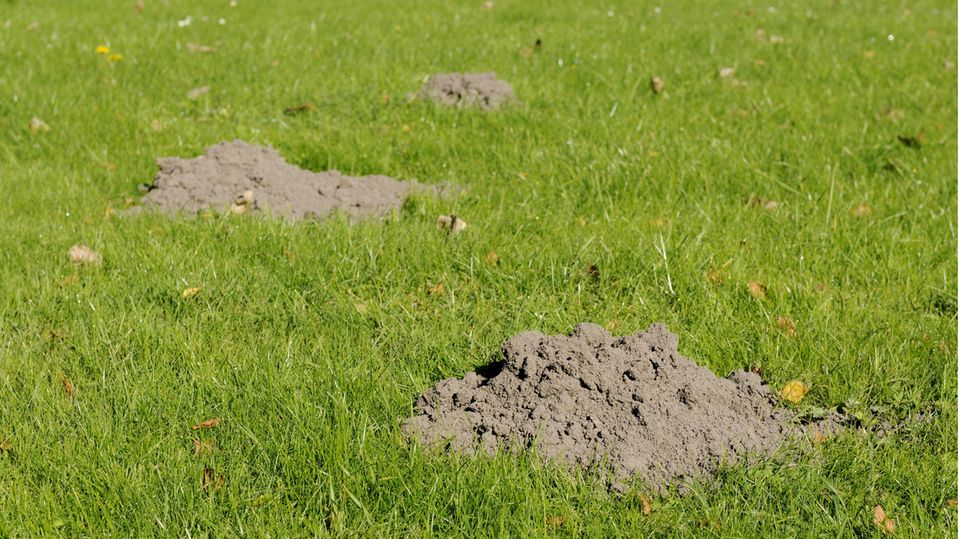Tips & Tricks
Drive away voles: How to protect your garden from rodents
Voles are a horror for (hobby) gardeners because they love to eat root vegetables and flower bulbs
© CreativeNature_nl / Getty Images
They like plants to eat: voles can be a real pest. The rodents attack underground and eat their fill of roots, tubers and bulbs. As a greeting they leave large mounds of soil in the vegetable patch – much to the annoyance of many garden owners. The question arises: What (home) remedies can you use to get rid of voles?
Although they are so small and seem harmless – almost cute – voles can cause a lot of damage. The rodents’ menu includes not only root vegetables such as celery and carrots, but also fruit trees: more precisely, it is their young roots and their bark that the herbivores target. To get to the underground delicacies, the animals dig small tunnels and pile up mounds of earth similar to those of a mole. However, this is under Nature conservation and must not be fought. For this reason, you must first make sure that you are dealing with voles before taking any initial action to combat them.
Mole or vole: recognize the difference
At first glance, the mounds of moles and voles appear identical. However, if you look a little closer, clear differences emerge. These can be identified as follows: Moles pile up the earth so that there is a hole in the middle of the mound – in voles, however, the hole is more to the side. In addition, there are often plant remains and roots in the soil the rodents have piled up. To be sure that they are really voles, you should take a closer look at the underground passages. If these are rather wide and oval, you have caught the perpetrators in the act. If, on the other hand, the tunnels are rather small and round, they may have been dug by a mole. Another indication that speaks for or against voles are the mounds of earth. Here, too, the difference lies in the details: high, round and stable mounds are typical for a mole. The rodents, on the other hand, tend to produce flat, oval mounds of earth that are somewhat unstable. In addition, the mice are more likely to dig up fresh soil in spring and autumn – in the summer, however, the mole is significantly more active.
In contrast to the mole, the vole tends to leave elongated mounds in the garden
© Zoonar RF/Getty Images
Tips: How to fight voles effectively
1. Vole repellent (without poison)
The company Silberkraft offers a gentle method to drive away voles: This deterrent consists of a special granulate (including dosing aid) made from lemon eucalyptus, which is said to keep rodents away due to its strong smell. It is simply sprinkled into the underground passages and, after an application period of up to two weeks, is intended to ensure that the voles avoid your garden or raised bed for up to 85 days. Without the use of poison.
2. Ultrasound
So-called Ultrasound probes are also intended to drive voles (and moles) out of the garden. The solar-powered devices work without batteries or a cable connection and should be sufficient for a garden area of up to 750 square meters. They scare away the animals by sending low-frequency sound waves – which are said to have a deterrent effect on voles. These are said to be barely audible to the human ear. The devices are available to buy individually or as one set.
3. Vole grid
A proven method of keeping voracious rodents out of raised beds and composters is to use Vole screens made of galvanized metal. Depending on the manufacturer, these are delivered rolled up by the meter and can be easily cut to size. The fine mesh prevents intruders from getting to roots, tubers and bulbs or gnawing away at the compost. Alternatively, you can also make a kind of wire basket and place it around the plant roots. This method has also proven successful on fruit trees.
4. Live traps
Provide a pet-friendly way to remove voles from the garden Live traps. As the name suggests, the animals are caught alive – ideally with an attractive bait such as some root vegetables (celery or carrot). However, wear gloves when setting up the trap so that your scent doesn’t stick to it. The question still remains: what to do with the mice after they’ve been caught? Ideally, you should release them in a remote forest and away from your or your neighbor’s property.
5. Poison bait
The use of poison bait should only be used in an emergency if you can no longer get the infestation under control. The vole remedy Quiritox von Neudorff For example, according to the manufacturer, it is a reliable, ready-to-use special bait with a long-term effect. However, its primary purpose is to counteract undermining under terraces, foundations, paths and slabs. The correct dosage can be found on the packaging. For the garden, however, there is ready-to-use bait for vole control.
How to use nature against voles
To keep the voracious rodents out of the garden or raised bed, you can use natural repellents. These are intended to drive away voles – or at least reduce the damage caused by feeding. Plants that develop a strong smell of their own, such as, are said to have a particularly deterrent effect on the animals Imperial crown (Warning: poisonous!), garlic, Cross-leaved spurgedog tongue and sweet clover. Or you can consciously plant those vegetables that magically attract the animals in order to distract them from the actual beds. These mainly include celery, carrots and Jerusalem artichokes. Alternatively, you can dig a small moat around your fruit trees and fill it with water. This floods the underground passages and prevents animals from getting to the young roots.
Sources: NABU, My beautiful garden, Federal Environment Agency
You might also be interested in:
This article contains so-called affiliate links. Further information are available here.




